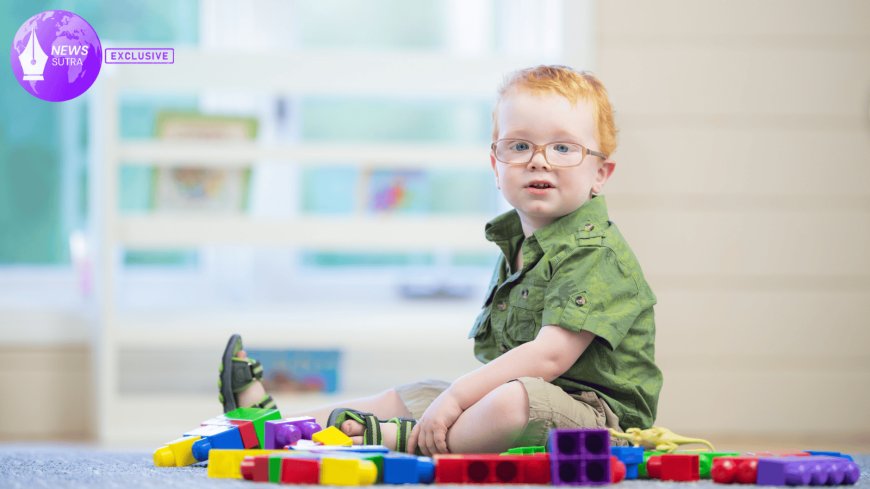Autism and Nanotechnology: Stem Cell Breakthroughs Offer New Hope
New findings reveal how nanotechnology enhances stem cell treatments for autism. Exclusive researcher insights highlight breakthroughs and ethical debates.

The intersection of nanotechnology, stem cell therapy, and autism research is opening doors that were once thought impossible. In recent months, scientists at several U.S. labs have revealed promising findings that suggest nanoparticles could enhance stem cell treatments, potentially improving brain connectivity and reducing behavioral symptoms associated with autism spectrum disorder (ASD). While mainstream coverage often oversimplifies autism research, these new discoveries reveal the technical complexities, ethical debates, and groundbreaking possibilities at play.
The Breakthrough: Nanoparticles as Stem Cell Catalysts
Stem cells have long been seen as a frontier for regenerative medicine, offering the ability to replace damaged or underdeveloped cells in the brain. The challenge, however, has always been controlling how stem cells behave once introduced into the body. Researchers at Stanford University’s School of Medicine recently demonstrated that nanoparticles can act as delivery vehicles, guiding stem cells toward targeted areas of the brain and regulating how they differentiate.
This technique not only improves precision but also minimizes potential risks like uncontrolled growth or cell misplacement, which have historically limited clinical applications of stem cell therapy in autism.
Autism-Specific Applications
Autism is marked by differences in brain connectivity and neurotransmitter signaling. By combining stem cells with nanoparticles, researchers are experimenting with ways to repair neural circuits, particularly in the prefrontal cortex and hippocampus—regions linked to social behavior and memory.
In preliminary lab trials on animal models, treated subjects showed:
-
Improved communication between brain cells.
-
Reduction in repetitive behaviors.
-
Enhanced responsiveness to environmental cues.
These findings are still early-stage, but they represent a leap forward in precision medicine for autism, moving beyond symptom management toward potential biological repair.
Voices from the Lab
Dr. Melissa Carter, a lead nanomedicine researcher at MIT, explained:
“What makes nanotechnology revolutionary in autism therapy is its ability to direct stem cells like a GPS system. Instead of introducing cells and hoping for the best, we now have tools to guide and monitor their behavior in real time.”
Meanwhile, bioethicist Dr. Jonathan Meyers raised caution:
“Excitement must be tempered with responsibility. Autism is a spectrum with diverse needs, and not every person would view biomedical ‘correction’ as desirable. The social dimension of autism should not be erased by the promise of a cure.”
The Funding Landscape
The research is not without challenges. With recent NIH budget adjustments, smaller biotech startups pioneering autism-focused nanotechnology have reported delays in securing grants. Analysts warn this could slow down clinical trials, even as public interest grows. According to Nature’s recent review of nanomedicine, private investment may play a more significant role in driving progress than federal funding.
Accessibility for Families
Families of children with autism are already asking how soon such treatments could reach the clinic. Experts suggest that while early animal trials are encouraging, human applications are likely a decade away. Safety testing, ethical reviews, and regulatory hurdles remain significant barriers. For now, therapies such as behavioral interventions and sensory integration continue to be the frontline of autism care.
Still, parents and advocacy groups are hopeful. Autism Speaks, a leading nonprofit, has noted that nanotechnology represents one of the most innovative directions in autism science today, bridging gaps between genetics, neurology, and applied medicine. More detailed resources can be found on NIH’s autism research initiatives.
The Bigger Picture
The fusion of nanotechnology and stem cell science is not limited to autism. Researchers are also exploring applications in Parkinson’s disease, Alzheimer’s, and spinal cord injuries, suggesting that today’s discoveries could reshape how we think of neurological care as a whole. For autism, however, this marks a critical turning point—proof that the scientific community is not only listening but also investing in tailored solutions for one of the most complex developmental conditions of our time.
Conclusion
As nanotechnology reshapes the boundaries of medical science, autism research stands at a pivotal crossroads. Stem cells enhanced by nanoparticles could eventually help repair the very circuits that define cognition, memory, and social connection. While ethical and financial debates continue, one fact is clear: these breakthroughs are giving families, scientists, and policymakers a new vocabulary of hope—one rooted in both science and responsibility.











